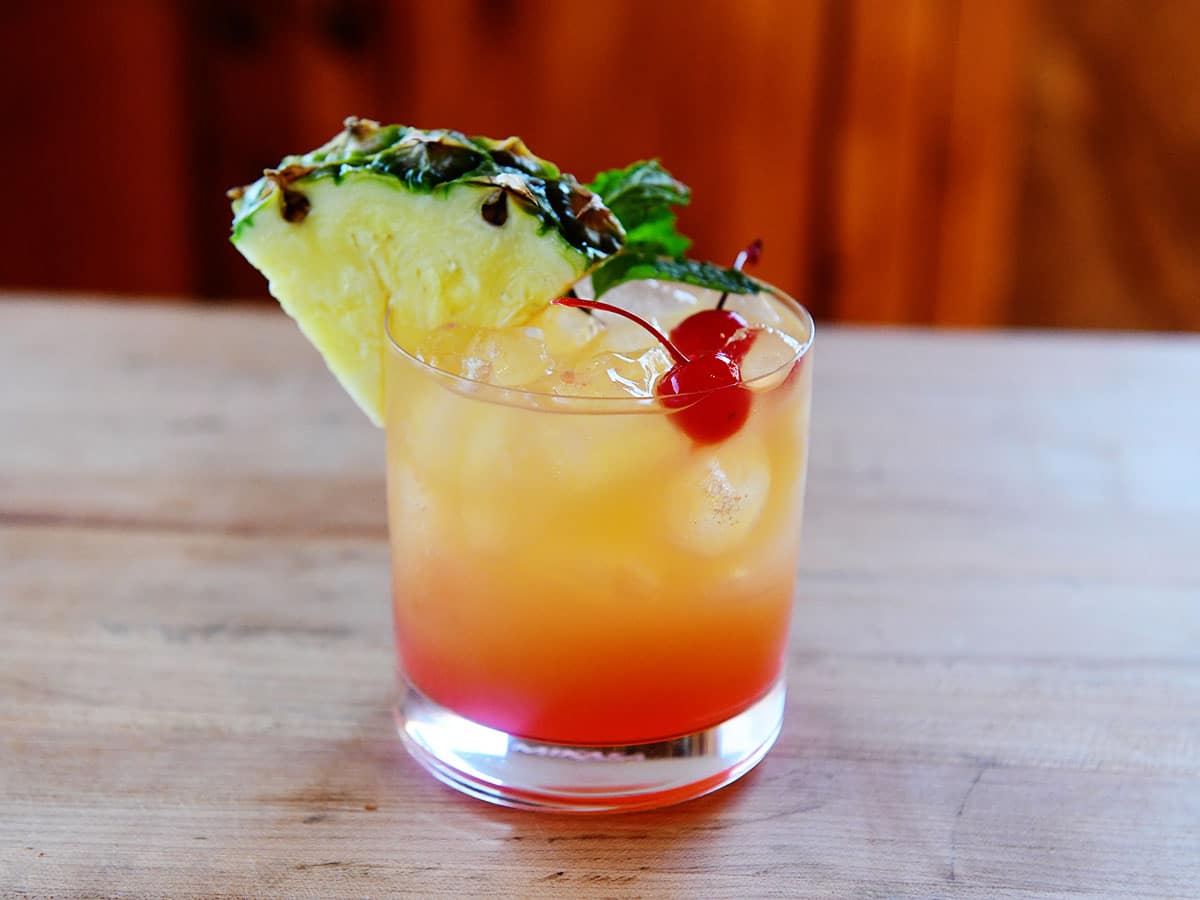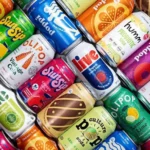
Introducing the Mai Tai, a timeless and iconic cocktail that has woven itself into the fabric of mixology and Tiki culture. With a contested origin dating back to 1944, credited to the ingenious Victor J. “Trader Vic” Bergeron, the Mai Tai has transcended its creation at Trader Vic’s in Oakland, California, becoming a global symbol of tropical indulgence. This simple yet sophisticated libation boasts a captivating history, a blend of exotic flavors, and a legacy that extends beyond its humble origins. Join us as we delve into the fascinating world of the Mai Tai, uncovering its secrets, controversies, and the cultural impact that continues to make it a cherished classic in the realm of cocktails.
Origin: The Mai Tai cocktail, a tropical delight with a mysterious and contested origin, was reputedly brought to life by Victor J. “Trader Vic” Bergeron in 1944 at his Trader Vic’s restaurant in Oakland, California. Vic claimed that he created the cocktail to showcase a new 17-year-old Jamaican rum he had acquired, and it swiftly became a staple of his Tiki-themed establishment. However, it’s important to note that the true origin of the Mai Tai is shrouded in controversy, as Donn Beach, the founder of Don the Beachcomber, also asserted that he invented the Mai Tai in the 1930s, leading to a longstanding dispute between the two Tiki pioneers.
Invention Date: The birthdate of the Mai Tai holds historical significance as it is said to have been crafted on August 30, 1944, at Trader Vic’s in Oakland. This specific date marks the introduction of a cocktail that would go on to become an iconic part of cocktail culture, representing the zenith of the Tiki craze that swept through the United States in the mid-20th century.
Inspiration: Trader Vic’s Mai Tai drew inspiration from Vic’s visit to the Caribbean, where he reportedly tasted a Polynesian drink that sparked the idea for his own concoction. The influence of tropical flavors, combined with Vic’s creativity, culminated in the creation of a cocktail that not only tasted delightful but also transported patrons to a paradisiacal realm.
Name Meaning: The name “Mai Tai” adds a touch of exoticism to the cocktail. In Tahitian, it is said to mean “good” or “out of this world,” encapsulating the idea that this drink is a sublime experience for the palate.
Key Ingredients: At the heart of the classic Mai Tai recipe are key ingredients that contribute to its distinctive flavor profile. The combination of rum, lime juice, orgeat syrup (a sweet almond syrup with floral notes), and orange liqueur forms the backbone of this cocktail, showcasing a harmonious blend of citrusy, nutty, and tropical elements.
Rum Variety: Notably, the original Mai Tai recipe featured a rare and discontinued 17-year-old Wray & Nephew Jamaican rum, providing a depth and complexity to the cocktail. This choice of rum contributed to the cocktail’s exclusivity and elevated it to a sought-after libation among enthusiasts.
Controversial Origin: The Mai Tai’s contested origin stems from the differing claims of Trader Vic and Donn Beach, both influential figures in the Tiki bar scene. The debate adds an intriguing layer to the Mai Tai’s history, as each camp staunchly defends their version of events, leaving the true creator shrouded in mystery.
Official Mai Tai Recipe: The International Bartenders Association (IBA) has defined the official Mai Tai recipe, standardizing its ingredients for bartenders worldwide. This recipe, with precise measurements of white rum, dark rum, orange liqueur, lime juice, and orgeat syrup, serves as a benchmark for enthusiasts and mixologists aiming to recreate the authentic Mai Tai experience.
Rum Content: The inclusion of both light and dark rum in the classic Mai Tai recipe imparts a nuanced flavor profile. Light rum provides a crisp and clean base, while dark rum adds richness and complexity, creating a balanced and layered cocktail that has become a hallmark of the Mai Tai.
Glassware: Presentation plays a crucial role in the Mai Tai experience. The cocktail is traditionally served in a highball or old-fashioned glass, enhancing the visual appeal of the drink. This choice of glassware not only reflects the Tiki culture’s emphasis on aesthetics but also allows the vibrant colors of the cocktail to shine through, contributing to the overall enjoyment of the Mai Tai.
Garnish: The finishing touch to a Mai Tai is its garnish, typically consisting of a sprig of fresh mint and a lime wheel. This not only adds an aromatic element to the drink but also contributes to the visual spectacle, aligning with the Tiki culture’s emphasis on presentation and sensory appeal. The aromatic essence of the mint complements the citrusy notes of the lime, elevating the overall drinking experience.
Evolution of Recipe: Over the years, the Mai Tai recipe has undergone various interpretations and modifications by different bartenders and establishments. This evolution has resulted in a myriad of Mai Tai variations, showcasing the versatility of the cocktail while preserving its core identity. Some versions may incorporate different rums, flavored syrups, or unique garnishes, allowing bartenders to put their own creative spin on this classic libation.
Tiki Culture: The Mai Tai’s close association with the Tiki culture is a defining aspect of its historical significance. Emerging in the mid-20th century, the Tiki craze was characterized by the proliferation of establishments adorned with tropical and Polynesian themes. The Mai Tai, with its exotic ingredients and presentation, became an emblematic representation of this cultural phenomenon, influencing not just cocktails but also fashion, music, and decor.
Popularity in the 1950s-60s: The Mai Tai rode the wave of popularity during the Tiki craze of the 1950s and 1960s. This period saw a surge in interest in tropical drinks and themed bars, with the Mai Tai at the forefront. Its widespread appeal during this era solidified its status as a timeless and iconic cocktail, transcending its origins in Trader Vic’s and becoming a symbol of leisure and escapism.
International Icon: Beyond its American roots, the Mai Tai has become an internationally recognized cocktail, featured on drink menus around the globe. Its allure lies in the exotic and refreshing combination of flavors, making it a go-to choice for those seeking a taste of the tropics, no matter their location.
Mai Tai Day: The designation of August 30th as National Mai Tai Day serves as an annual celebration of this beloved cocktail. This day allows enthusiasts and establishments alike to pay homage to the Mai Tai’s history, encouraging special events, promotions, and gatherings centered around this iconic drink.
Record for Largest Mai Tai: In 2011, the Royal Hawaiian Hotel in Honolulu created the largest Mai Tai ever made, measuring over 80 gallons. This impressive feat not only underscored the cocktail’s enduring popularity but also showcased the creativity and spectacle that surround Tiki culture, where larger-than-life presentations are part of the experience.
Most Expensive Mai Tai: The title of the “World’s Most Expensive Mai Tai” was claimed by the Merchant Hotel in Belfast in 2007, with a price tag of £750 (approximately $1,500 at the time). This extravagant version of the Mai Tai featured rare and aged ingredients, emphasizing the cocktail’s capacity to cater to both the discerning palate and those seeking a luxurious indulgence.
Mai Tai in Popular Culture: The Mai Tai has left an indelible mark on popular culture, finding mentions in literature, music, and movies. Notably, it is referenced in the lyrics of the iconic song “Margaritaville” by Jimmy Buffett, highlighting its cultural significance and widespread recognition.
Tiki Bars and Mai Tai Competitions: Tiki bars worldwide embrace the Mai Tai as a centerpiece of their offerings. Additionally, Mai Tai competitions have become a platform for bartenders to showcase their creativity and skill, as they craft unique variations of this classic cocktail. These events not only celebrate the Mai Tai but also contribute to the ongoing evolution of its recipe and presentation.
Trader Vic’s Legacy: Trader Vic’s, the birthplace of the Mai Tai, has left an enduring legacy. What started as a single restaurant in Oakland, California, has expanded globally with multiple locations in various countries. The brand remains synonymous with Tiki culture and continues to serve Mai Tais alongside an array of other tropical cocktails and Polynesian-inspired dishes, preserving the spirit of Trader Vic’s original vision.
Mai Tai Glass Auction: In 2016, a set of four Mai Tai glasses designed by Victor J. Bergeron for Trader Vic’s went up for auction, fetching a notable price of $600. This auction highlighted the collector’s appeal of Mai Tai memorabilia, as enthusiasts sought to own a piece of Tiki history associated with the cocktail’s iconic creator.
Mai Tai Festival: The Mai Tai Festival, an annual event held in Hawaii, further cements the cocktail’s connection to tropical paradise. This festival attracts locals and tourists alike, featuring Mai Tai contests, live music, and tastings. The celebration underscores the Mai Tai’s cultural significance, not just as a drink but as a symbol of relaxation and enjoyment in a lush, tropical setting.
Mai Tai’s Influence on Cocktail Culture: The Mai Tai’s impact on cocktail culture extends beyond its own recipe. Credited with popularizing the use of fresh fruit juices and high-quality ingredients, the Mai Tai has influenced bartenders globally. Its emphasis on craftsmanship and balanced flavor profiles has set a standard for cocktail making, contributing to a broader renaissance in mixology.
Mai Tai’s Impact on Rum Sales: The Mai Tai’s popularity has not only elevated the status of the cocktail but has also had a tangible impact on the sales of rum. Enthusiasts seeking to replicate the authentic Mai Tai experience often opt for premium and aged rum varieties, driving increased demand for these products. This ripple effect underscores the Mai Tai’s role not just as a delightful drink but as a catalyst for the appreciation of quality spirits.









